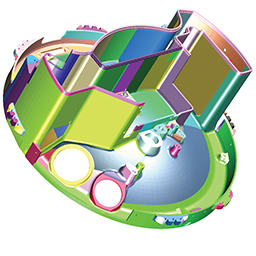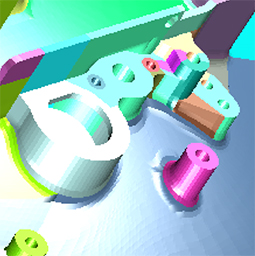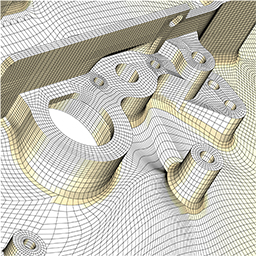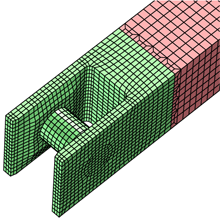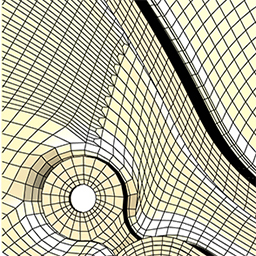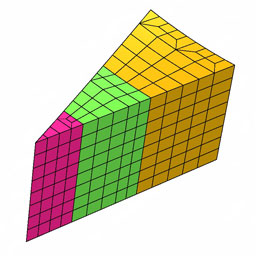Transitions and Assemblies
Two parts can be glued together using the block boundary feature. This assures that the coincident nodes in the two parts are identical and there is a 1:1 correspondence on both sides. This makes it easier to build complex models by first building each component and then gluing the components together. Alternatively, two regions in the same part can be glued together. Transformations can be applied to one side of the gluing so that it can be used to form periodic replications. In the example below, simple components with perodic block boundaries produced the treads on a model of a tire.
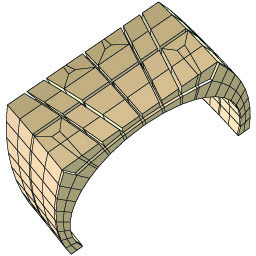

Assembling Many Parts
In this example a complex model is broken into 177 parts and glued together. Each color represents a different part.
Zooming in on the mesh you can see the parts match perfectly
Transition Between Parts
If the number of elements in one region of a part is half or double the number in the other region on a part (possible the same part), then a transitional block boundary is needed. A row of hex (quad shell) elements at the interface are automatically replaced with a row that sews the two regions together to produce a node for node, edge for edge, and face for face matching across the interface.
For the complex model transitional elements are used at every level to match parts.
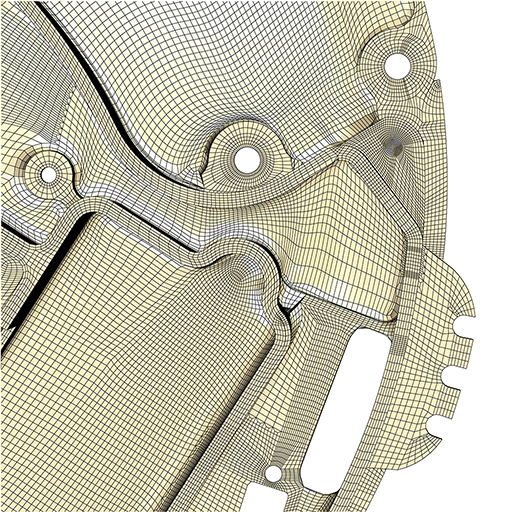 |
Multiple Layers Forming Locally Dense Meshs
Transitions can be layered to radically change the mesh density. The example below has three transitions in two directions with a transition scale factor of 12 in each direction.
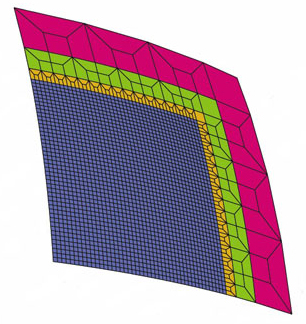 |
The same concept is seen for the complex model. A transition layer is used to increase the mesh density for a region.

